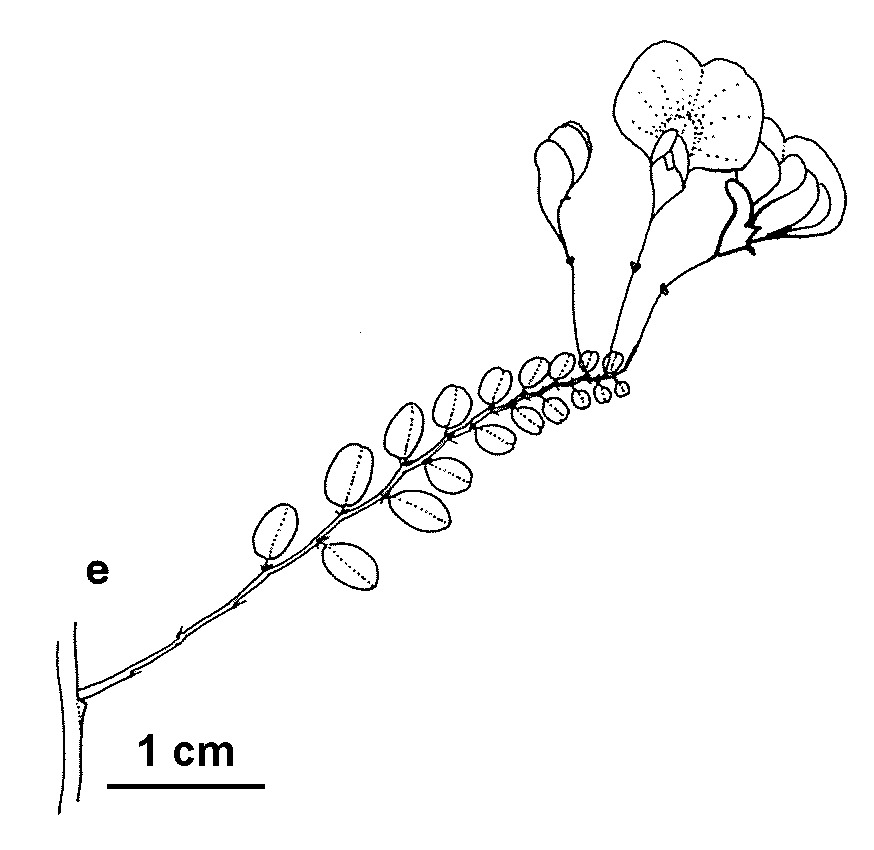Bossiaea buxifolia
A.Cunn. Matted BossiaeaProstrate to weakly erect shrub to 50 cm high, sometimes mat-forming; stems terete, with appressed or spreading hairs. Leaves alternate, shortly petiolate, elliptic to ovate or rotund, 2.5–5 mm long, 2–5 mm wide, often cordate at base, discolorous; upper surface sometimes tuberculate; lower surface pubescent, hairs sometimes restricted to the conspicuous veins; margins recurved to slightly revolute; stipules setaceous or narrow-triangular, exceeding petiole. Flower solitary, 6–8 mm long, usually aggregated at ends of short lateral branches; pedicels (3–)5–20 mm long; bracts to 1 mm long; bracteoles 0.6–1.2 mm long, inserted above middle of pedicel, persistent; calyx 3–4.5 mm long, tube equal to or shorter than upper lobes, upper lobes 1.5–2.5 mm long, larger than lower lobes; standard longer than wings and keel, suffused red externally, yellow internally; keel less than 6 mm long; ovary ± sessile, glabrous except ciliate margins, 5–12-ovuled; style 1.5–2 mm long. Pods narrow-oblong, 1.5–3.2 cm long; stipe not or scarcely exceeding calyx. Flowers Sep.–Feb.
VVP, GipP, Gold, CVU, NIS, EGL, EGU, WPro, HSF, HNF, MonT, HFE, VAlp. Also Qld, NSW, ACT. Occurs in dry sclerophyll forest and woodland in eastern Victoria, mostly on ranges east of Omeo, with an isolated population at Providence Ponds.
This name has previously been applied to plants that occur throughout central and eastern Victoria. However, it is now restricted to eastern Victoria, with plants occurring from Bright to Beaufort placed in Bossiea decumbens. These two species are principally distinguished by differences in floral characters, with B. decumbens generally being larger-flowered (see note under B. decumbens).
Ross, J.H. (1996). Bossiaea. In: Walsh, N.G.; Entwisle, T.J., Flora of Victoria Vol. 3, Dicotyledons Winteraceae to Myrtaceae, pp. 808–815. Inkata Press, Melbourne.
 Spinning
Spinning
